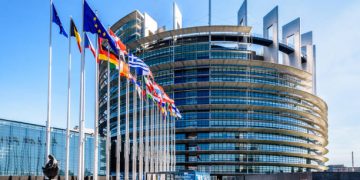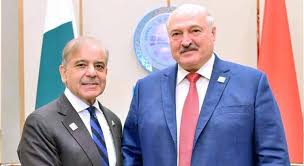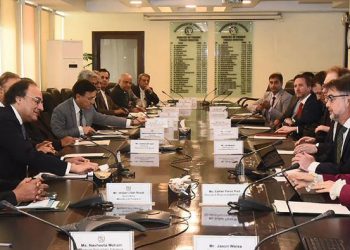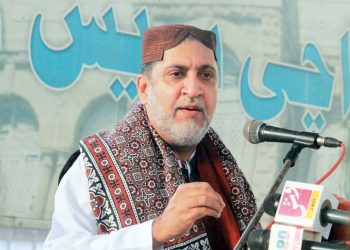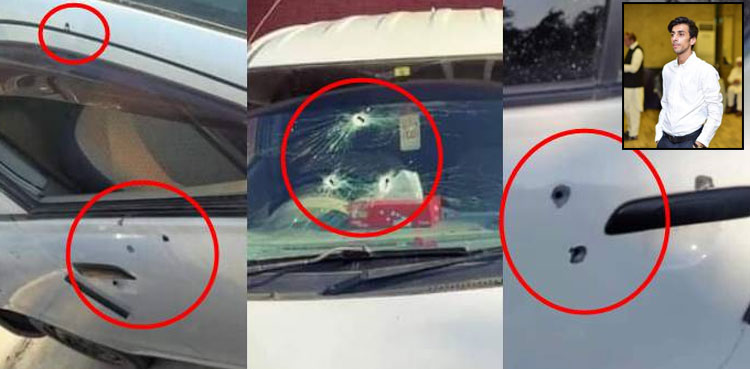Pakistan on Sunday, slammed India on the 28th anniversary of demolition of Babri Masjid by Hindu extremist 28 years ago.
In a statement issued by Ministry of Foreign Affairs (MoFA), Pakistan lambasted India on the anniversary of desecration and demolition of Babri Masjid 28 years ago on December 6th 1992 by right-wing Hindu extremists in Ayodhya, India.
“On this day, 28 years ago, Hindu zealots of the RSS-inspired BJP, backed by the state apparatus, demolished the centuries-old Mosque in Ayodhya in an abominable act of anti-Muslim frenzy and blatant violation of religious and international norms,” read the press-release issued by MoFA.
Pakistan accentuated that painful scenes of the demolition of Babri Mosque in 1992 still remain fresh in the minds of not only Muslims but all conscionable persons in the world.
The new illegitimate structure, which the Hindutva-driven BJP has campaigned for and is bent upon constructing as part of its agenda of converting India into a ‘Hindu Rashtra’, is a scar on the face of so-called “largest democracy” in the world.
The statement also condemned ‘flawed judgment’ of the Indian Supreme Court in the Babri Masjid case in November 2019 last year which reflected the preponderance of faith over justice but also the growing majoritarianism in today’s India, where minorities, particularly Muslims and their places of worship, are increasingly under attack.
Pakistan has also denounced construction of a temple at the Babri Mosque site amidst the ravaging Covid-19 pandemic, anti-Muslim Citizenship Amendment Act (CAA), the looming National Register of Citizens (NRC) to disenfranchise Muslims, the targeted killings of Muslims in Delhi with state complicity in February 2020.
It is pertinent to know that earlier, Islamic Cooperation (OIC) in its 47th session of the Council of Foreign Ministers (CFM) held at Niamey, called upon the Indian Government to take immediate steps to implement its commitment to reconstruct the Babri Mosque on its original site and to punish those responsible for its demolition.
OIC also urged Indian government to prevent the construction of temple on its site, take immediate steps to ensure the protection of the other 3,000 mosques, and ensure the safety and protection of the Muslims and Islamic Holy sites throughout India.
Demolition of Babri Mosque
In April 1984, the Vishwa Hindu Parishad (VHP) initiated a campaign to gather public support for Hindu access to the Babri Masjid and other structures that had been allegedly built over Hindu shrines.
To raise public awareness, VHP planned nationwide ‘rath yatras’ (chariot processions), the first of which took place in September–October 1984, from Sitamarhi to Ayodhya.
The campaign was temporarily suspended after assassination of Indira Gandhi, but revived in from 25 places on 23 October 1985. On 25 January 1986, a 28-year-old local lawyer Umesh Chandra Pandey, appealed to a court to remove the restrictions on Hindu worship in the Babri Masjid premises. Subsequently, the Rajiv Gandhi government ordered the locks on the Babri Masjid gates to be removed.
Earlier, the only Hindu ceremony permitted at the site was a Hindu priest performing an annual puja. After the ruling, all Hindus were given access to the site, and the mosque gained some function as a Hindu temple.
Communal tension in the region worsened when the VHP received permission to perform a shilanyas (stone-laying ceremony) at the disputed site before the national election in November 1989.
A senior Bharatiya Janata Party (BJP) leader, L K Advani, started a rath yatra, embarking on a 10,000 km journey starting from the south and heading towards Ayodhya.
On 6 December 1992, BJP, VHP and RSS leaders gathered at the site to offer prayers and perform a symbolic kar seva. At noon, a teenage Kar Sevak (volunteer) was “vaulted” on to the dome and that signalled the breaking of the outer cordon. Soon after, a large number of kar sevaks demolished the mosque.
Aftermath
Communal riots between Hindus and Muslims occurred across India immediately following demolition of the mosque. Rioting in the immediate aftermath resulted in the deaths of an estimated 2,000 people. Six weeks of riots further erupted in Bombay, resulting in the deaths of an estimated 900 people.
Despite this, the ensuing riots spread to cities like Mumbai, Surat, Ahmedabad, Kanpur, Delhi, Bhopal and several others, eventually resulting in over 2000 deaths, mainly Muslim.
The Mumbai Riots alone, which occurred in December 1992 and January 1993 and which the Shiv Sena played a big part in organizing, caused the death of around 900 people, and estimated property damage of around ₹ 9,000 crore (US$3.6 billion).
The demolition and the ensuing riots were among the major factors behind the 1993 Mumbai bombings and many successive riots in the coming decade.
2019 Ayodhya Verdict by Indian Supreme Court
On November 9th 2019, Supreme Court of India, in a unanimous verdict allowed the construction of Ram temple on the remains of Babri Mosque. In its order, the court cited Archaeological Survey of India (ASI) which argued that Babri Mosque was originally built on remains of a non-Islamic building and hence Hindus have a right to construct Ram temple on the disputed site.
The court then directed Indian government to allocate alternate land to Muslims for the construction of mosque.
Construction of Ram Mandir (temple)
Indian Prime Minister Narendra Modi on August 5th 2020, laid the foundation of Ram temple in Ayodhya on the ruins of Babri mosque.
M Narendra Modi attended the foundation laying ceremony of the Ram temple in Ayodhya – Uttar Pradesh (UP), on the remains of Babri mosque.
Religious sentiments run high as Hindu also believe that Ayodhya is the birth place of Lord Ram.
Chandrakant Sompura – the chief architect of the proposed temple, has stated that the temple would be based on “Nagara” style of architecture and will have three floors, 366 pillars and five domes.







